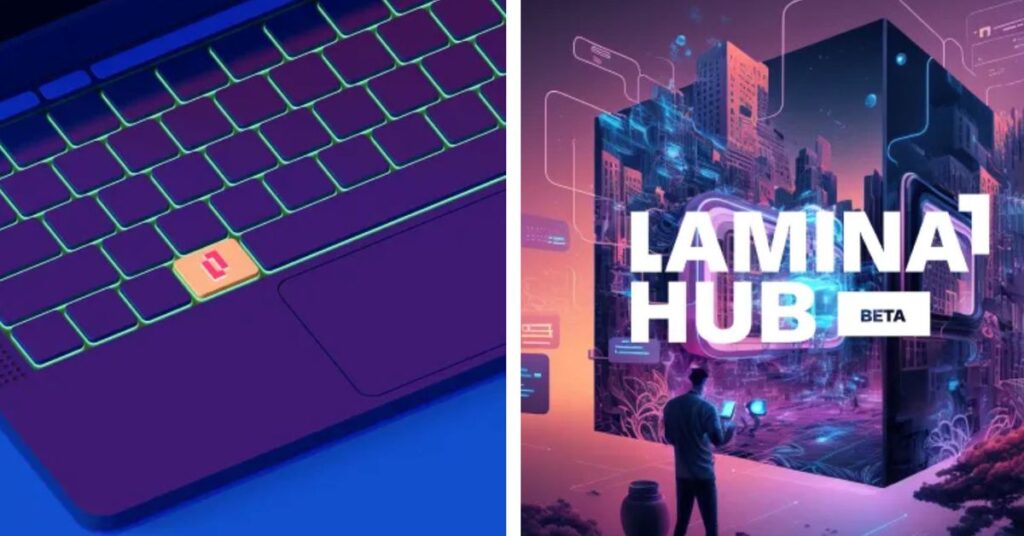Neal Stephenson’s Lamina1 Blockchain Launches Betanet and Hub for Metaverse Builders

Lamina1, the metaverse-focused layer-1 blockchain co-founded by science-fiction writer Neal Stephenson and early Bitcoin investor Peter Vessenes, has launched its betanet and Hub for creators to design the building blocks of a future open metaverse.
Stephenson coined the term metaverse in 1992 in his novel “Snow Crash,” which envisioned a cyberpunk future where the digital and physical worlds are intertwined. But in recent years, the so-called “metaverse” has materialized into fragmented virtual worlds that are not yet interoperable with one another.
In a recent interview with Fast Company, Stephenson described the pitfalls of Web2 and his current vision for the metaverse, which would stem from a “spatial organization” that ties digital spaces together.
“The idea that we’re working on [the metaverse] with Lamina1 feels to me like it’s kind of more foundational; it’s not one particular interpretation or product – it’s kind of a base layer of functionality that anyone ought to be able to use to build experiences,” he told the outlet.
Today, Lamina1 has expanded on Stephenson’s vision by launching its betanet blockchain alongside its new Hub for Web3 builders and developers, simplifying the Web3 wallet experience and onboarding process. During the betanet period, partners, world-builders, validators and developers can trial aspects of the network and tinker with its toolkit. Lamina1 says that the goal of betanet is to allow builders to create the scaffolding for an open metaverse “in a more persistent and stable environment” in the lead-up to its upcoming mainnet launch.
Lamina1 CEO Rebecca Barkin, a former executive at augmented reality firm Magic Leap, told CoinDesk that betanet is an “evolution” of its testnet, which went live in January of this year and had over 47,000 participants experience their burgeoning metaverse concept.
“Our aim is not to be simply another [layer 1] or [layer 2] that further fragments a complicated landscape, but to provide a community of content creators with the easiest path to developing high-quality content,” she said.
The latest updates are focused on improving the Lamina1 user experience by streamlining onboarding processes that strip away cumbersome language and processes. The platform now features a simpler authentication process to help users create new blockchain wallets without needing to preserve their private keys, while the Hub serves as a dashboard for a user’s profile, transaction history and as a tool for discovering new experiences built on Lamina1.
Users will also soon be able to send, receive and upload digital items like music and 3D objects, and can use those items to build on-chain experiences in a more stable and realistic environment. Over the next six months, Barkin said Lamina1 would roll out new features like an L1 name service, the ability to save and manage contacts, specialized subnets, decentralized storage for digital items and digital identity customization.
The company is also taking steps to ensure that its infrastructure is carbon negative through a delegated proof-of-stake consensus mechanism and by building a process for new nodes that requires them to purchase and retire carbon credits before validating any of their subnets.
“When we were assessing the right architecture for our partners, we loved what Avalanche had built, so we started there,” she explained. “Ultimately, we want to offer a foundation that promises to keep operational costs and gas fees more stable and predictable, has fewer security vulnerabilities, a more experience-oriented interface, and benefits from interoperability and fluid movement of identity and value being built right into the ecosystem.”
In addition, the company, which was founded in June 2022 with initial funding from tech giants like Reid Hoffman, Rony Abovitz and Matthew Roszak, is committed to its core values of interoperability and data ownership. Barkin said that people should have “privacy and prosperity” as they move through online spaces; control over their identities, personal data and assets; get paid fairly for their creations; and interact with each other in ways that “shouldn’t destroy the planet, the fabric of society or the livelihood of others.”
While there’s no defined date for the Lamina1 mainnet launch, Barkin said they are “not far” and are aiming to put out a product that can be used broadly and publicly by early next year.
“At a minimum, before we launch, we want to ensure we can deliver on usability, stability, identity, game engine integration, and a few key dev tools. And we’re committed to solving the issue of enforceable royalties – [intellectual property] protection, transparency, and better economics are the promises that will bring high-quality creators into the mix, so we must address it,” she said.
Source link
#Neal #Stephensons #Lamina1 #Blockchain #Launches #Betanet #Hub #Metaverse #Builders






1 thought on “Neal Stephenson’s Lamina1 Blockchain Launches Betanet and Hub for Metaverse Builders”